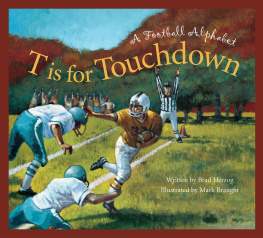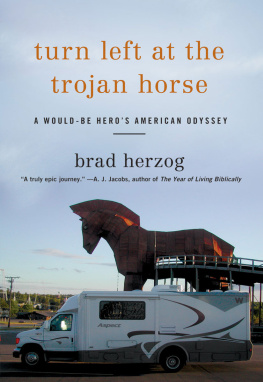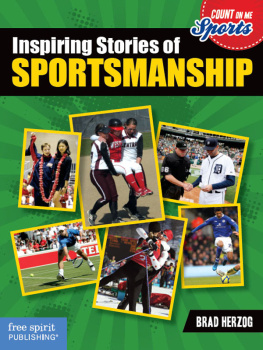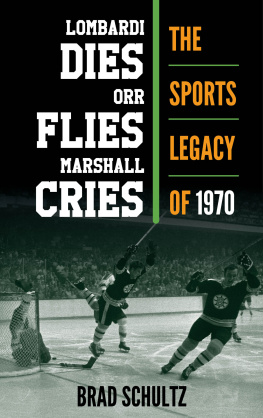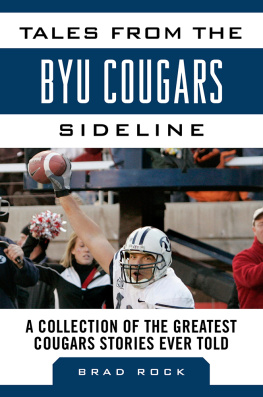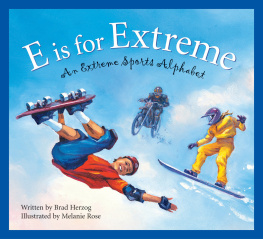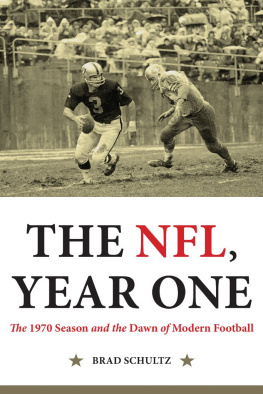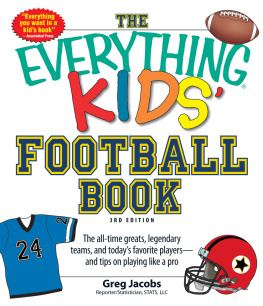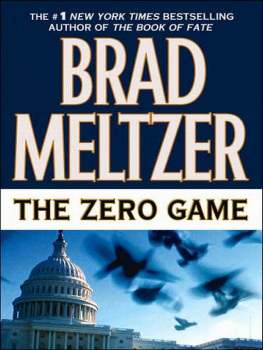
T is for Touchdown
A Football Alphabet
Written by Brad Herzog and Illustrated by Mark Braught
Photo reference used on the R page: courtesy of Tournament of Roses Archives.
Text Copyright 2004 Brad Herzog
Illustration Copyright 2004 Mark Braught
All rights reserved. No part of this book may be reproduced in any manner
without the express written consent of the publisher, except in the case of brief
excerpts in critical reviews and articles. All inquiries should be addressed to:
Sleeping Bear Press
315 E. Eisenhower Parkway, Ste. 200
Ann Arbor, MI 48108
www.sleepingbearpress.com
Sleeping Bear Press is an imprint of Gale.
Printed and bound in China.
10 9 8 7 6 5 4 (case)
10 9 8 7 6 5 4 3 (pbk)
Library of Congress Cataloging-in-Publication Data
Herzog, Brad.
T is for touchdown : a football alphabet / written by Brad Herzog;
illustrated by Mark Braught.
p. cm.
pbk ISBN-13: 978-1-58536-337-7 case ISBN-13: 978-1-58536-233-2
1. FootballJuvenile literature. 2. Alphabet booksJuvenile literature.
I. Braught, Mark, ill. II. Title.
GV950.7.H47 2004
797.332dc22 2004006108
To Bernard Bunny Rosenblum, captain of the 1916
New Castle (Pennsylvania) High football team.
BRAD

For all the members, staff, and volunteers of the Boys & Girls Clubs of America
and the communities, corporations, and individuals that support them and
the important work they do for our future. Thank you.
MARK
A
The first All-American football team appeared in 1889, when magazine owner Caspar Whitney decided to list the 11 college football players who were best at their positions. Since then, many different organizations have chosen All-Americans for both high school and college football.
A is also for the Arena Football League (AFL), which features football played indoors on a field 50 yards long. Each team lines up eight players, and most of them compete on both offense and defense. It is an exciting brand of football. Players bounce off padded sideline barriers, and the ball bounces off nets just beyond the end zone. Teams often combine for more than 100 points in a game. The AFL has brought pro football to smaller cities, such as Peoria, Illinois. Former AFL quarterback Kurt Warner became a twotime Most Valuable Player in the National Football League.
A is for amazing athletes who always aim to winthe A-number-one football stars picked All-American.
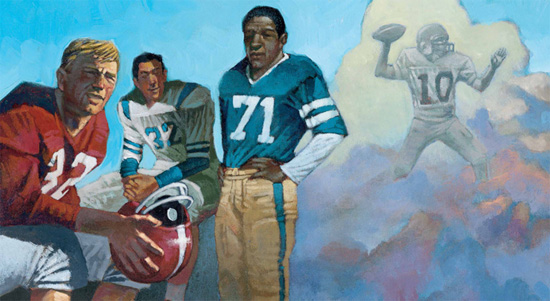
B
The football, an inflated oval with laces, is often called a pigskin. But most modern footballs are made from cowhide leather or (for younger players) rubber. Pro football uses a slightly larger ball (11 to 11 inches long and 14 to 15 ounces in weight) than the college game. In general, the football increases in size as the people throwing it grow.
Early footballs were larger, rounder, and difficult to throw. But as the football began to take on its modern shape, the forward pass became a vital part of the game. A perfectly thrown pass is called a spiral. It is thrown by placing your index finger (pointer) at the beginning of the laces, then putting the rest of your fingers in every other lace and your thumb around the back of the football. Bring the football to ear level, rotate your hips and try to make your fingers be the last thing to touch the ball.
Leather stitched together, the brown ball is our B . A perfectly thrown spiral is quite a thing to see.
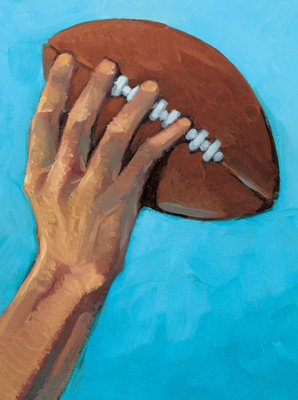
C
The Ohio city of Canton was chosen as the site of the Pro Football Hall of Fame because it was there that the National Football League was founded in 1920. Since the Hall of Fame opened in 1963, more than 200 players, coaches, and contributors have been inducted. The building houses hundreds of historical displays in 51,000 square feet of space.
The first recorded instance of a game resembling modern North American football took place between a Canadian team (McGill University) and an American squad (Harvard University) in 1874. Today, many American college football stars go on to play professionally in the Canadian Football League (CFL). There are several important differences between Canadian and American pro football. The CFL uses a slightly rounder ball, a longer and wider field, three downs to gain 10 yards instead of four, and 12 instead of 11 players per side. The leagues championship game is known as the Grey Cup.
Canton, Ohiothats the C that cradled the pro game. The city is now home to the Pro Football Hall of Fame.
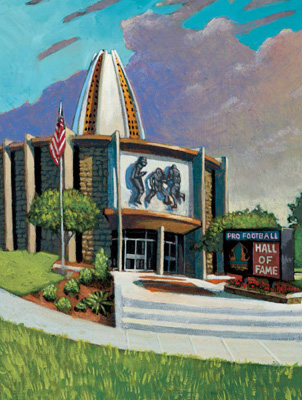
D
Usually, four defensive linemen, three linebackers, and four players in the secondary make up the defense. Linemen try to tackle the ball carrier on running plays and rush the quarterback on passing plays. Linebackers usually stand a few yards behind the linemen to guard against a run or pass. The secondary (or defensive backfield) includes two cornerbacks and two safeties who guard against a long pass. They may play man-to-man defense (each player covers a particular receiver) or zone defense (each player covers an area of the field).
The offense has four downs (plays) in which to gain at least 10 yards. The first try is called first-and-10, meaning it is the first down and the team is 10 yards away from making another first down. If the team gains three yards, then the next play is second-and-7, and so on. On fourth down, a team may either punt the ball down the field or go for it, trying to gain a first down. If they dont make it, the other team takes over where the play stopped.
D is for the defense, refusing to give ground and stopping the opposing team from making a first down.
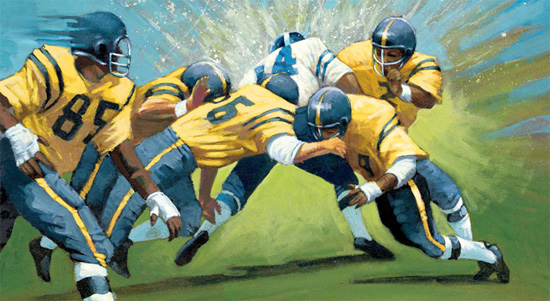
E
E is also for end zone, a rectangular area that is 10 yards deep on most football fields. At the back of the end zone are goalposts connected by a horizontal crossbar 10 feet off the ground. The goalposts (also called uprights) are 18 feet apart.
After a team scores a touchdown, achieved by reaching the end zone, it may attempt an extra point conversion. Usually, a placekicker tries for one point (a PAT, or point after touchdown). The ball is placed on the two-yard line (three-yard line in college and high school) and snapped to a holder, who places it on its tip. The kicker must kick the ball over the crossbar and through the goalposts. However, teams may also try for two points by running or passing the ball into the end zone from the three-yard line.
E is eleven players to a side, too. A penalty may be called if too many or too few players are on the field.
E is for an extra point kicked straight through the goalposts. When trying to eke out a win, one point can matter most.
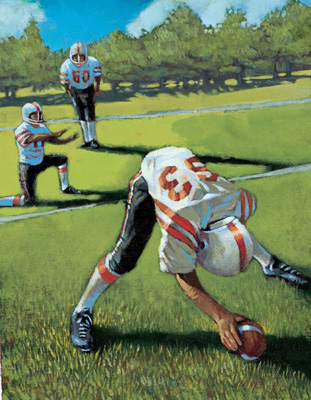
Next page
